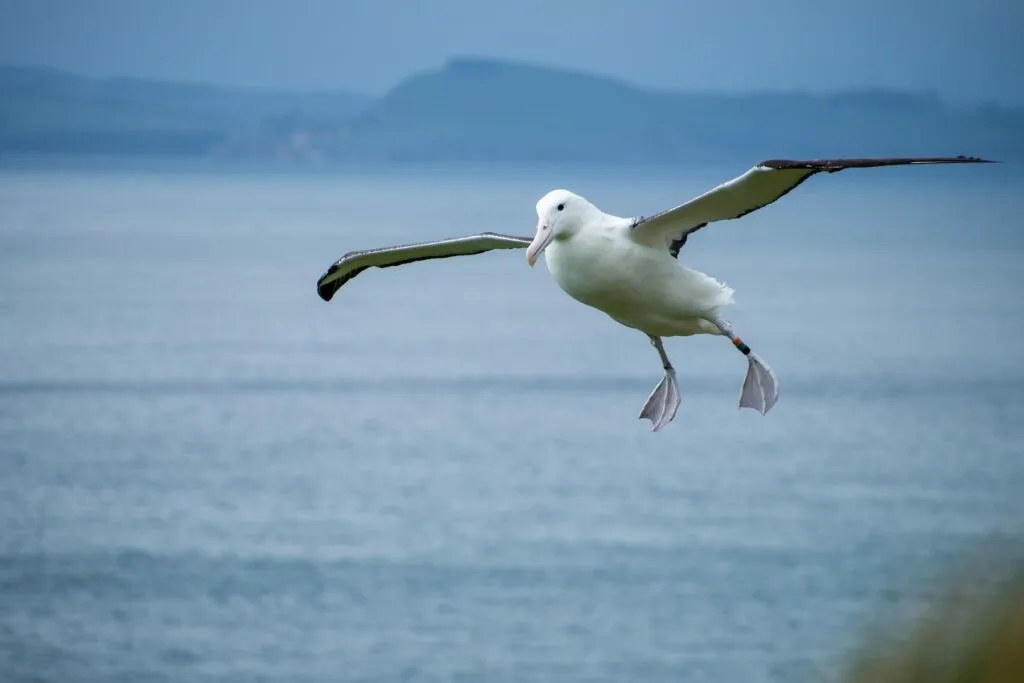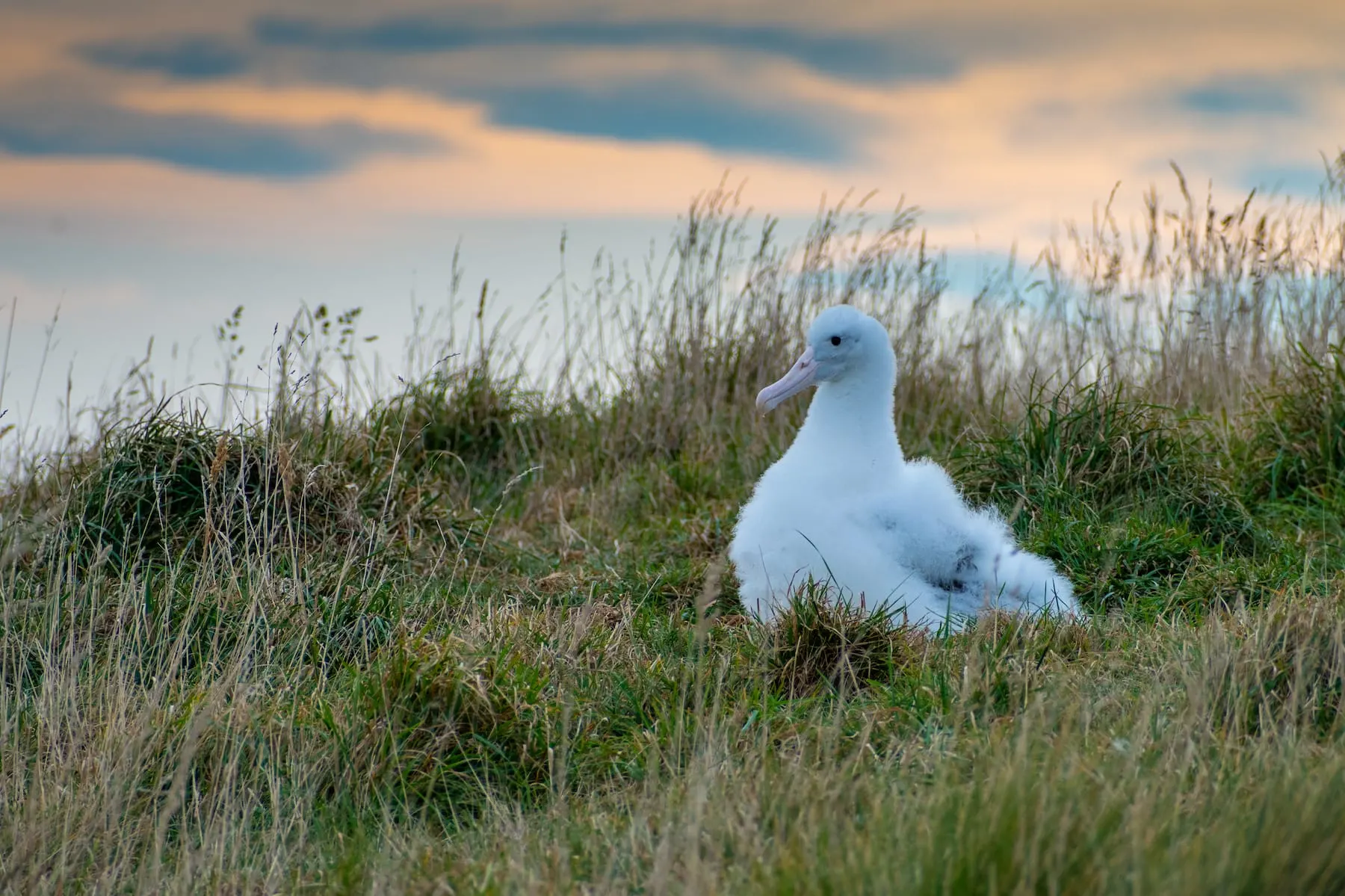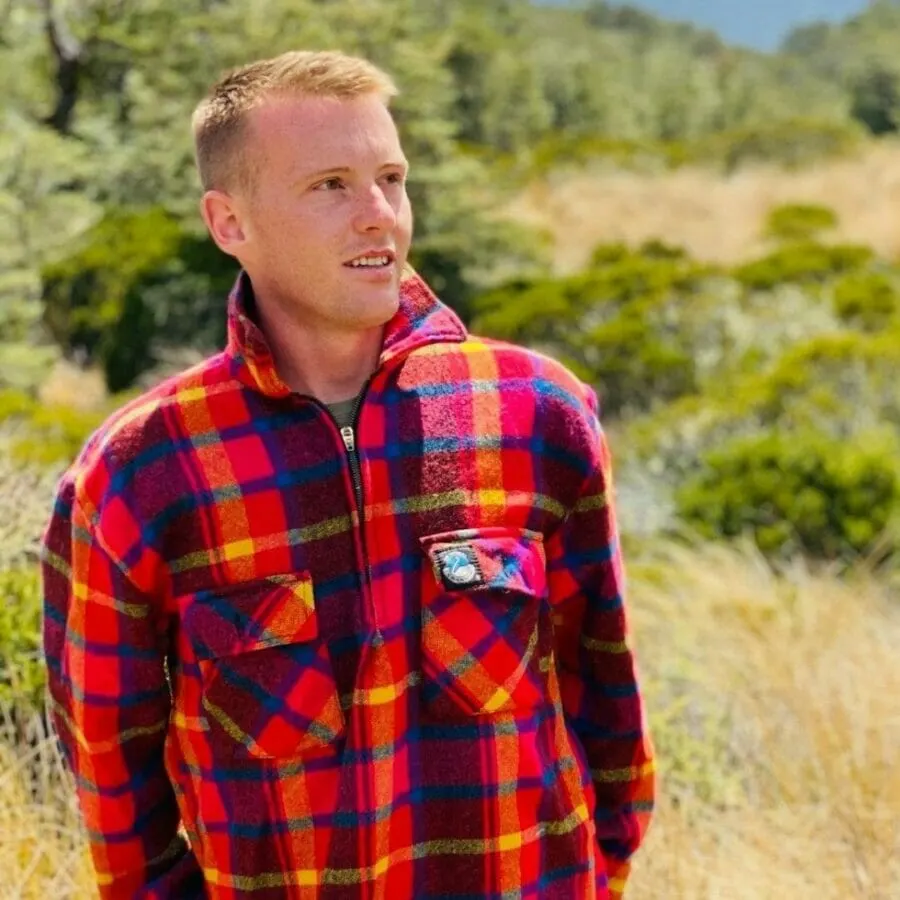Expert travel storyteller Jordan Adkins, founder of InspiredByMaps.com, brings a decade of adventures across 101 countries and 450+ UNESCO sites into rich, off-the-beaten-path narratives, melding ecological expertise with genuine, seasoned travel insights. His full bio can be found here.
Taiaroa Head and The Royal Albatross Centre is a large nature reserve where home to the world’s only mainland Royal Albatross Breeding Colony. As such, this magical place allows you are a truly unique experience of being able to get up close and person with giant albatrosses!
Located on the furthest end of the Otago Peninsula, one of New Zealand’s greatest tourist destinations and home to the great city of Dunedin, the country’s oldest and possibly most beautiful, there will surely be many highlights to visiting Taiaroa Head and The Royal Albatross Centre.
A land of rolling green hills and ridges and open pastures, dotted with little towns along the Otago Harbor shoreline, the peninsula largely lies within Dunedin’s city limits. It is a tourist mecca with some of New Zealand’s greatest attractions, as well as one of the planet’s great ecotourism destinations.
It has, in fact, been called the finest such in all the world by the late Dr. David Bellamy (of “gwapple me gwapenuts” fame), who was one of the world’s foremost environmentalists as well as a host of such TV shows as Bellamy’s Backyard Safari. There are many highlights of the large peninsula to consider on your day trip to Taiaroa Head and The Royal Albatross Centre, but first, let’s look at the main attraction.
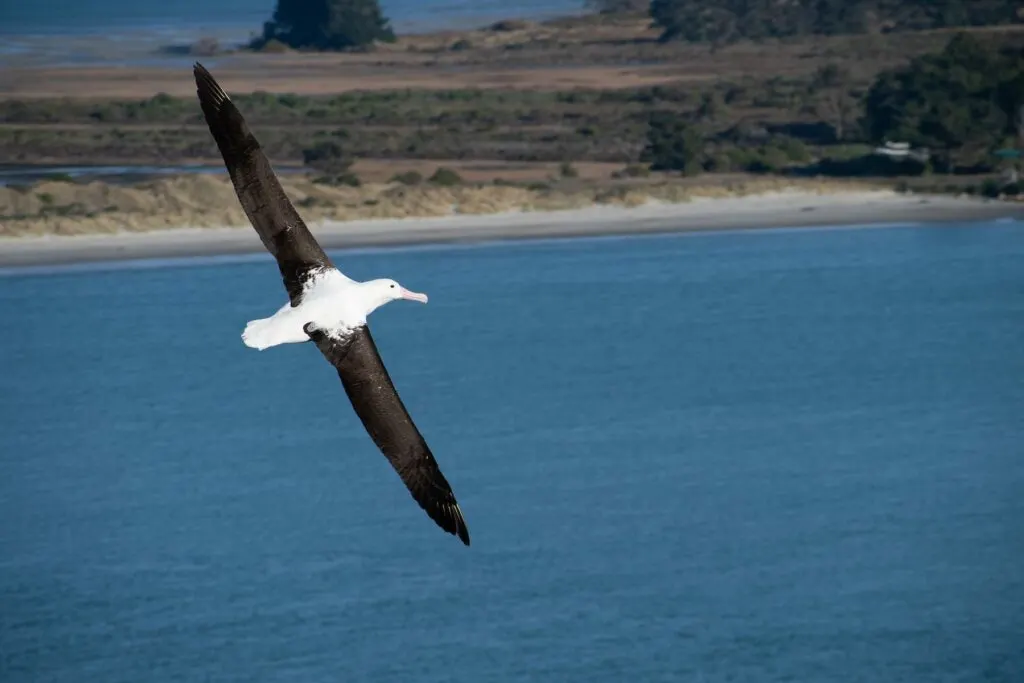
The Royal Albatross Centre
As we have said, this is the only mainland breeding colony for Northern Royal Albatross anywhere in the world and arguably the crown jewel of the Otago Peninsula (which would be no small claim). It offers a unique opportunity to witness these huge, majestic seabirds.
Visitors may even get a chance to see their courting/mating habits and watch them as they go about raising their chicks. Guided tours by knowledgeable experts are available at the observatory and are conducted in a number of languages, including German, Spanish, Italian, Hebrew, Chinese, Japanese, Korean, Russian and Swedish.
Due to demand booking a tour in advance is strongly recommended, as it is a long drive out to be left disappointed at the end.

The tour offers intriguing insights into these majestic monarchs of the sea from passionate and knowledgeable guides, who are also deeply involved in conservation here.
The tour starts with a video explaining the history of the site and about the birds you will see, then it is time to head up to the various ‘hides’ (which are actually old military bunkers) to watch the birds – which may be fledging, nesting or wandering around depending on the time of visit.
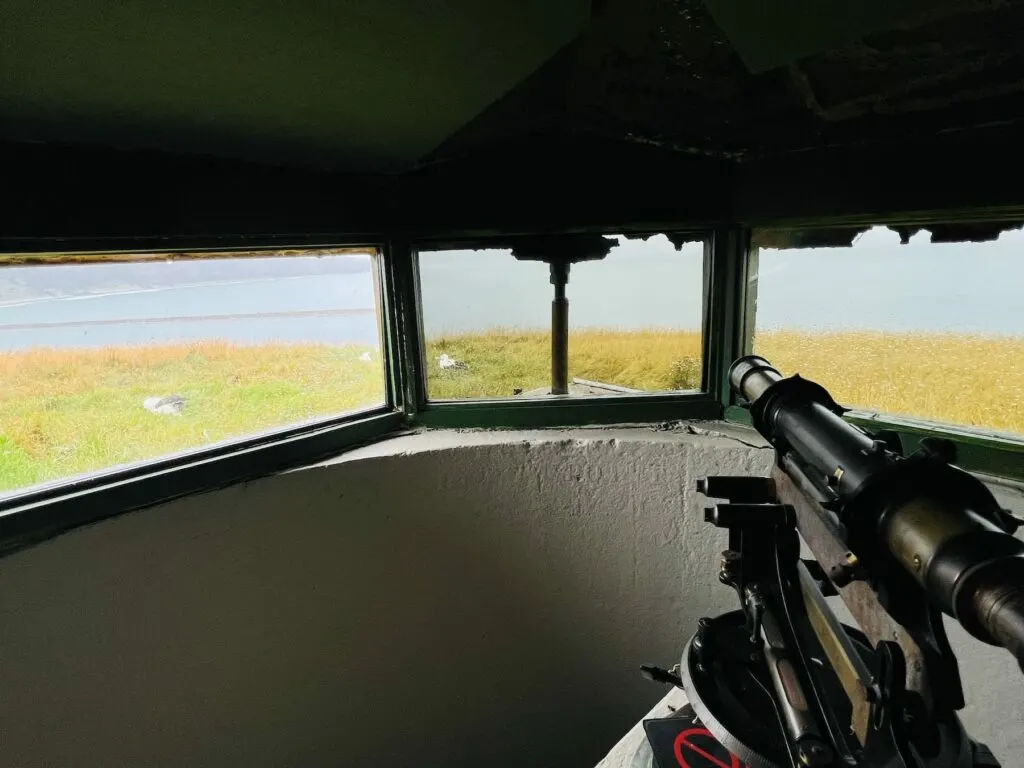
The Royal Albatross Centre would not be what it is today without the efforts of reserve rangers throughout the years since its opening in 1989 by the Otago Peninsula Trust and the Department of Conservation. This opening was actually a culmination of efforts of many dating back to 1919 when the first albatross egg was discovered here, although it was not until 1938 that the first chick fledged here – as a result of the extensive work undertaken by ornithologist Dr. Lance Richdale.
And of course, funds brought in by tourism now help to keep alive the effort to protect these threatened birds and other species found in the Taiaroa Head like the red-billed gull. To be clear, the albatross are not kept in captivity but are allowed to live natural lives in the wild, though eggs are sometimes collected and hatched in brooders.
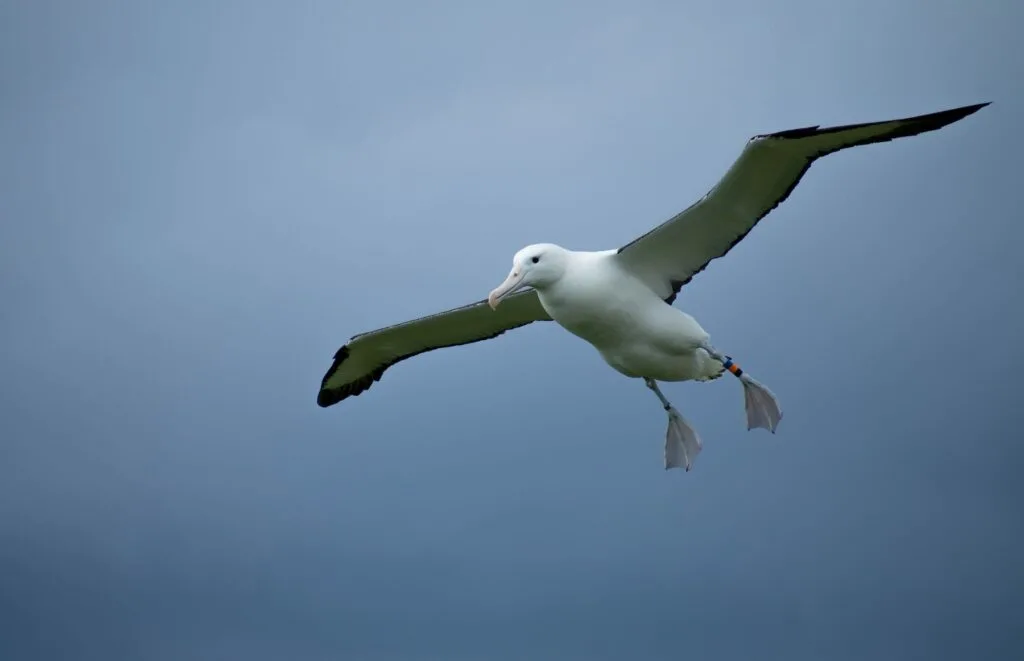
Taiaroa Head
Called Pukekura in the Maori language, Taiaroa head sits at the peninsula’s northern tip. Something visitors should know is that this area can only be accessed by the public via guided tours from the Royal Albatross Centre. But don’t let that dissuade anyone from coming: it is well worth it nonetheless.
In fact, guided tours are really the best way to ensure that you’ll get the most out of any visit. And with the high concentration of great sites here – not just related to conservation but also intriguing history as a significant Māori pā then as a military installation, Taiaroa Head is just too good to pass up.
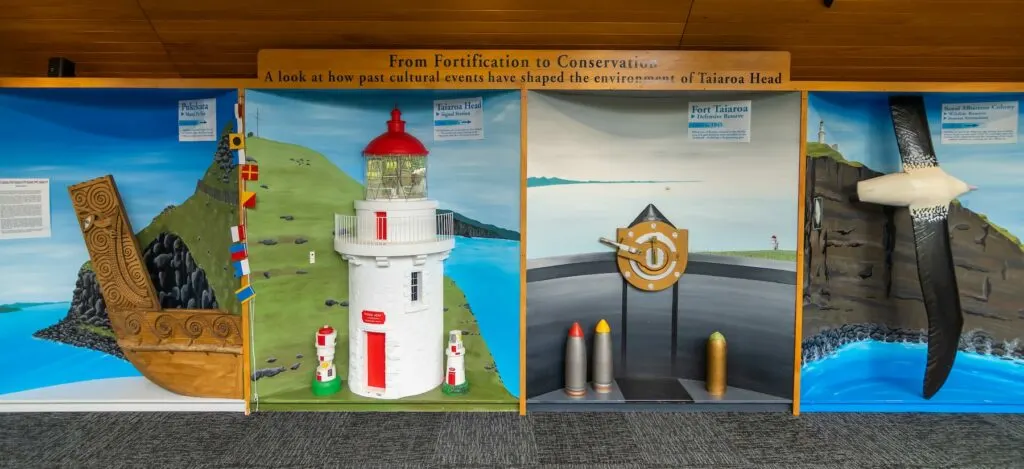
Taiaroa Head Lighthouse sits perched at the very terminus of the cape, looking out over the mouth of Otago Harbor. It is the oldest functioning lighthouse on the South Island and the second oldest in the of the 24 in New Zealand. Needless to say, it is one of Taiaroa Heads’ chief landmarks.
Fort Taiaroa was a ‘secret’ military fortress lying hidden beneath the Royal Albatross colony. Originally built in the latter 19th century in response to the threat posed by Russia Tsar, the fort is but the latest chapter in Taiaroa Head’s military history, for the cape was the site of a fortified Maori village before the arrival of the British, and it was also the home of a famous Maori warrior named Tarewai.
Its chief claim to fame is its Armstrong disappearing gun, which had been placed in 1886 and which is the only one of its kind still in operation. Demonstrations (of the gun being raised from its gun pit, not of it actually being fired) are part of the Fort Taiaroa tour. Other tours of the fort include the tunnels and the observation post that was used to keep a lookout for potentially hostile ships passing through during the World War 2 era, when the fort was once again quite active.
There were also a half-dozen big gun batteries placed around the cape, some of which can still be viewed.
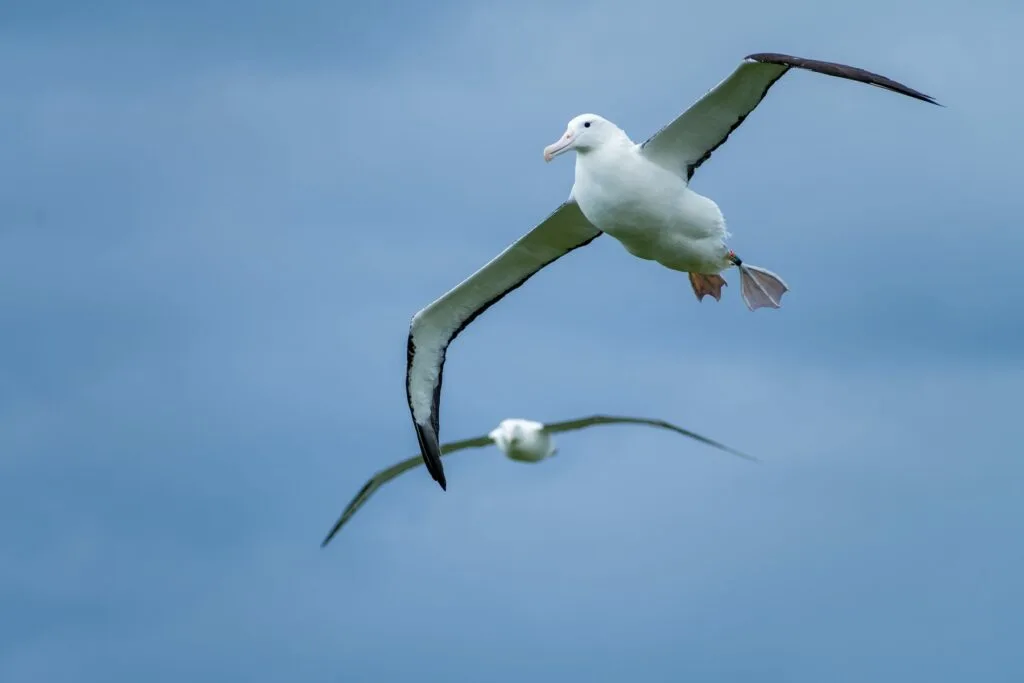
Other Highlights Of The Otago Peninsula
As stated, the Otago region is blessed with a wealth of great things to see and experience. Hiking and biking opportunities abound in the spectacular landscapes of Otago – and all are in easy reach with car hire if you are staying in any of the top hotels in Dunedin.
Okia Flats Nature Reserve describes itself as a hidden gem, and is not wrong in doing so — the reserve is home to a yellow-eyed penguin sanctuary as well as some pretty amazing native flora. Allans Beach Wildlife Park allows some pretty easy access to the Ocean, which is a five minutes walk from the car park. The beach is the abode of penguins and sea lions in addition to a variety of birds.
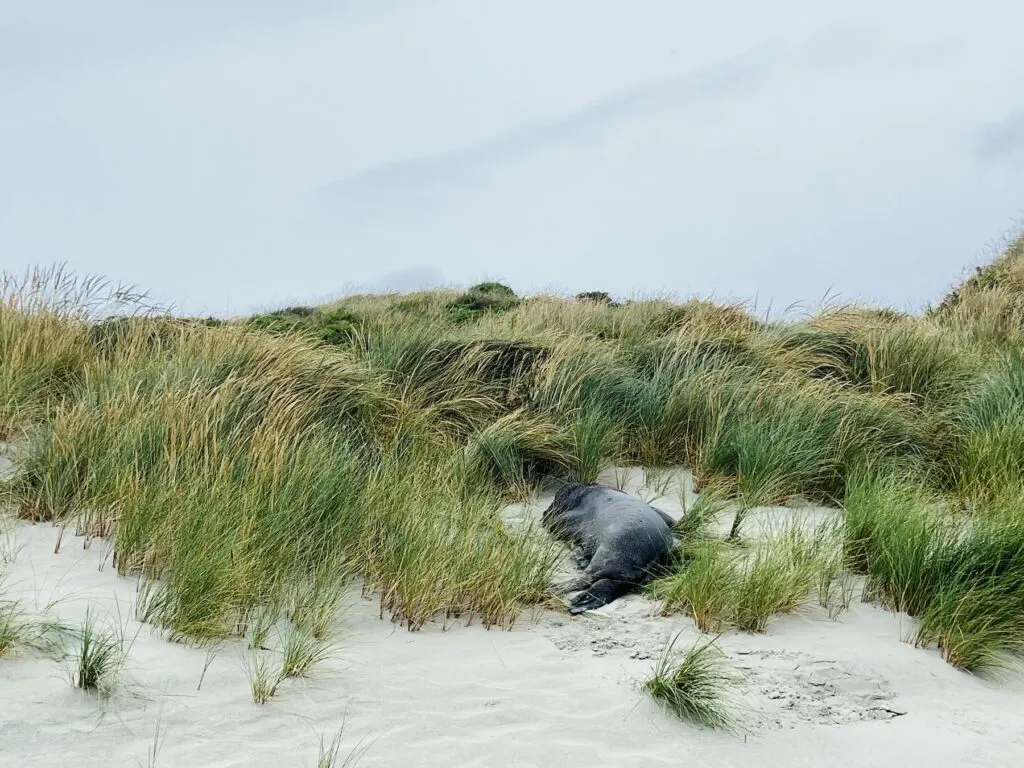
Monarch Wildlife Cruises and Tours has a variety of guided tours available, giving visitors a chance to experience everything the Otago Peninsula has to offer: a splendid city, castles, quaint villages, beautiful harbors, and beaches, and stunning wildlife. This latter is the real draw for most people: there is a reason why the Otago Peninsula is called the wildlife capital of New Zealand, in a country also so famed for its wildlife.
Pilots Beach, though being small, is located at the base of the Taiaroa Head and The Royal Albatross Centrewell worth a visit for any nature lover. It is home to the largest colony left on Otago of the smallest species of penguin, the Kokora, or Little Blue Penguin. Yellow-eyed penguins can also be found in this area, and orcas, whales, and dusky dolphins can often be spotted here.
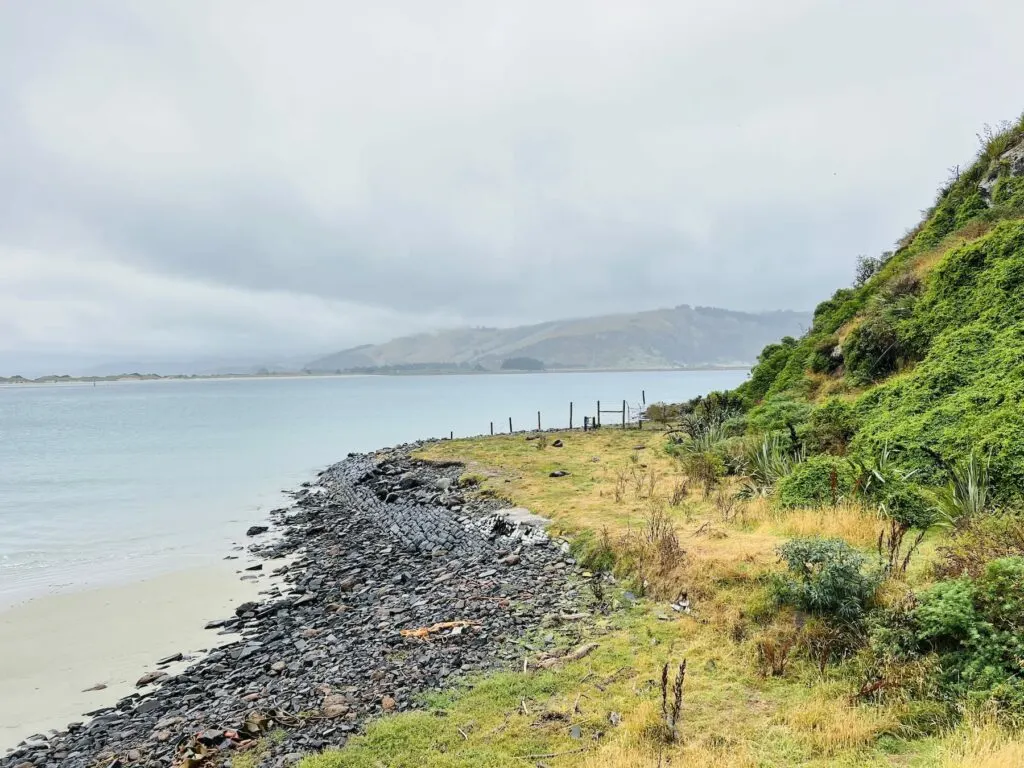
Harington Point is a small settlement with World War 2 era gun emplacements and a bunker nearby. Boat tours are launched from the wharf at nearby Wellers Rock.
Natures Wonders Naturally is also another site on the end of the Peninsula working sheep farm Run by the Reid Family, who are 100% Kiwis through and through, that operates argo tours (argos are 8-wheeled all-terrain vehicles) of Taiaroa Head and the farm itself. Natures Wonders also does catamaran tours. These one-hour cruises explore Otago Harbour and the Tairoa Head Lighthouse, as well as the open ocean, where guests will have the opportunity to witness ocean wildlife in addition to the albatross.
The catamaran has two viewing decks and makes for a wonderful nature-watching experience. Private charters can be arranged. The Penguin Express Coach (bus) tour affords stunning views of the sea as well as penguin breeding habitats, all right on the farm. And the Sheep Shed Tour gives visitors a glimpse of life on a sheep farm and how it all works.
Natures Wonders also has an on-site cafe that is open seven days a week. The cafe serves coffee and cakes, naturally, as well as classic kiwi food like sandwiches, burgers, and such. The farm also serves as a function venue that can accommodate all kinds of events like weddings, business meetings, and personal celebrations and parties for up to 100 people. With its seaside panoramic views, the site serves as a stunning venue for a wedding.
More than just an agrotourism business, Nature’s Wonders is also a self-funded conservation effort dedicated to preserving the natural beauty and wildlife of Tairoa Head, which the Reids are very passionate about.

Finally, another major attraction of the Otago Peninsula is the Penguin Place Wildlife Refuge is a private conservation reserve dedicated to helping to protect the threatened yellow-eyed penguin. It claims to be the first conservation program entirely funded by tourism. The reserve has a lodge, and guided tours are offered. That tourism revenue goes toward research, habitat restoration, and rehabilitation for injured penguins.
Near Wellers Rock, Eden Wildlife Cruises, and Kayaking offers just what the name implies. The cruises last one hour and go all the way from Wellers Rock Wharf to Taiaroa Head. The guided sea kayaking tours offer an even closer look at the wildlife.
Boats are hired in the tiny Maori village Otakou, and there is also the Eden “Cafe,” which is actually a food caravan looking out toward Otago Harbour. It is quite a nice place to stop and refresh before taking off on one of the tours.
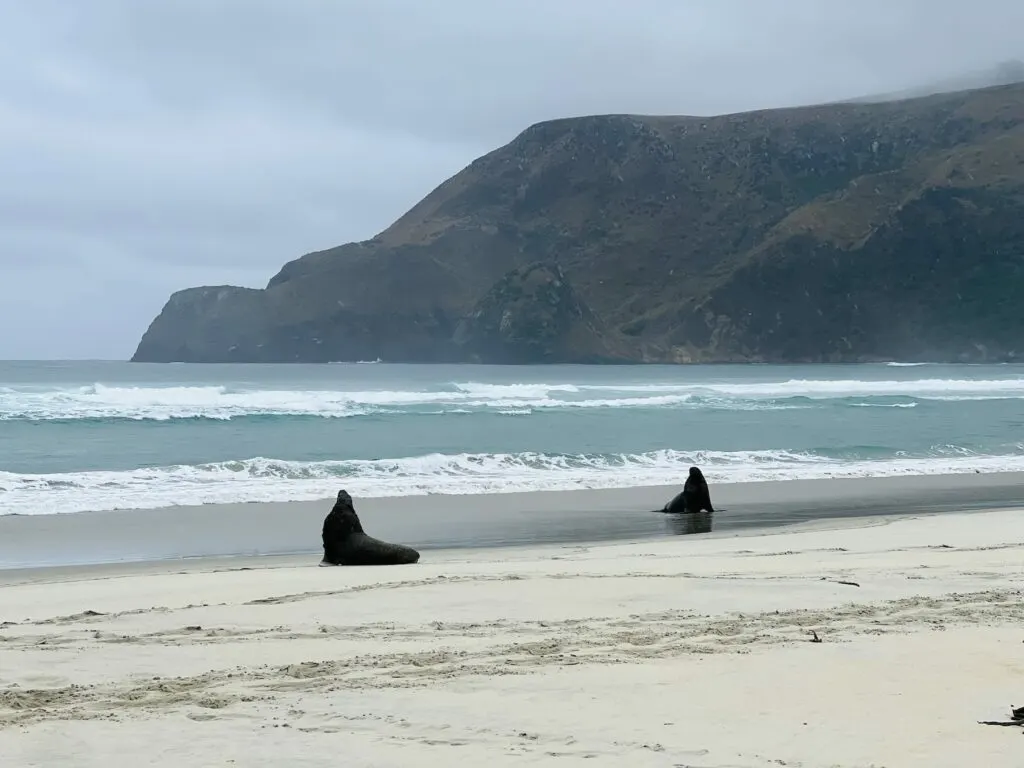
The main tour on offer is the “Wildlife and Adventure Tour” which can take at least roughly 90 minutes to complete. Single and double sea kayaks are available for the tour, which, believe it or not, requires no previous kayaking experience and can be suitable for any fitness level. On this tour, guests are likely to see seals, sea lions, little blue penguins, and cormorants in addition to albatross.
But of all the worthy sights and attractions to be found on the Otago Peninsula, it is Taiaroa Head and The Royal Albatross Centre that truly take the tourism prize. These offer a truly unforgettable experience that any traveler finding themselves on the South Island simply cannot afford to miss.
